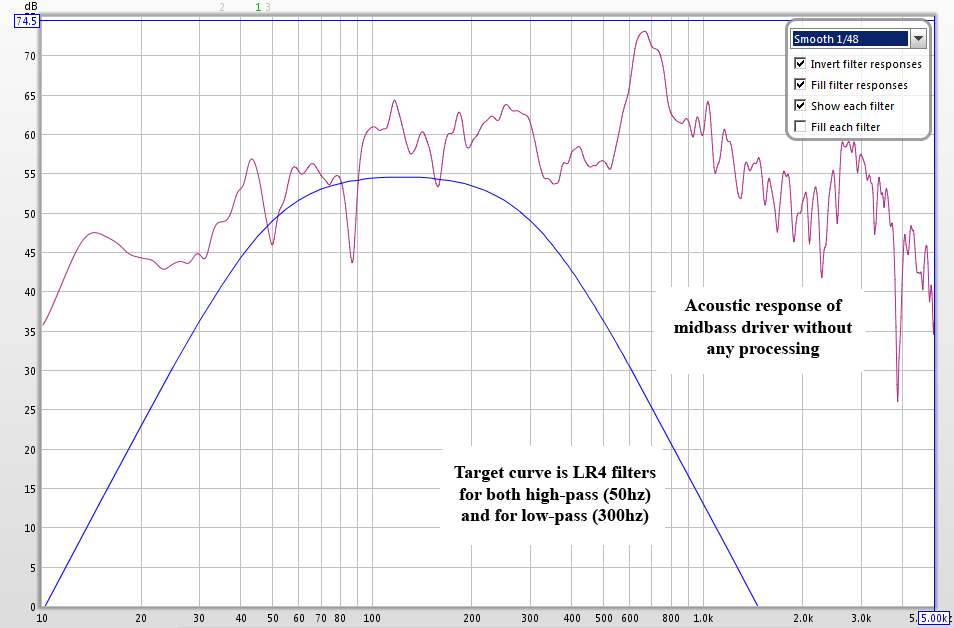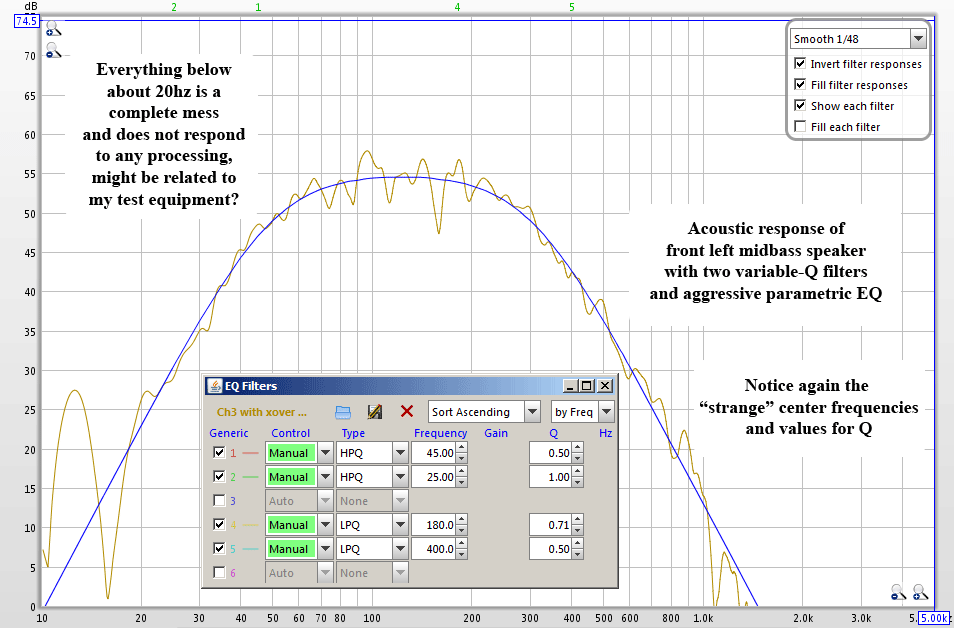First thing you need to do is
start this playlist of Lindsey Stirling and The Piano Guys on youtube. Their work is truly awesome, and I'm sure a bunch of you will enjoy the mashup of classical string instruments with dubsteb and other modern fusion music.
Ok, now that you have that playing, check this out. It totally worked!
----
After tuning the left channel fullrange driver in my above post, I went back outside and tuned the left midbass speaker using all of the same ideas and techniques. Below is (first) the acoustic response of the midbass without any processing and (second) the response after two 2nd order variable-Q high-pass and low-pass filters were applied along with aggressive parametric EQ to match the target curve as close as possible. Note, the target curve is created in excel using the same techniques as the post above, though this one is a little more trick to make.


Just a quick recap. I built my target response curves based on the 4th-order Linkwitz-Riley crossover alignment at frequencies of my choosing (50hz and 300hz). Then using Room EQ Wizard, I applied minimal amounts of variable-Q high-pass and low-pass filters to shape my acoustic response to match the target curve. Then I aggressively used the parametric EQ to force the acoustic response to very closely match the target curve. Finally, I used the loopback feature of REW to estimate the impulse response delay of each channel, and delayed the rullrange speaker by 0.42 milliseconds.
Here are the results. The following two graphs say it all.

So there it is. It worked. I'm really and truly happy with this result. I did not massage any of the data with the intention of creating this result, and in fact I had the time delays backwards at first and had a completely different (and disappointing) result. To have a hypothesis completely and definitively confirmed on the first try is beyond satisfying.
I hope this has been helpful. I've sure learned a lot.
Please ask questions because I know this isn't the easiest thing to describe!
Conclusions
1) Time delay should be used to align the first arriving waves from each speaker (as a compensation for time only) and not as I previously thought as a tool to find the optimum interference between speakers (as a compensation for phase).
2) Crossovers are not one-size-fits all. The electronic (or passive) crossover needs to be a compliment to the pre-tuned response of the system to result in an acoustic response that matches the crossover alignments we are all so familiar with. The 4th order Linkwitz-Riley is my preferred alignment in this case.







 Reply With Quote
Reply With Quote

